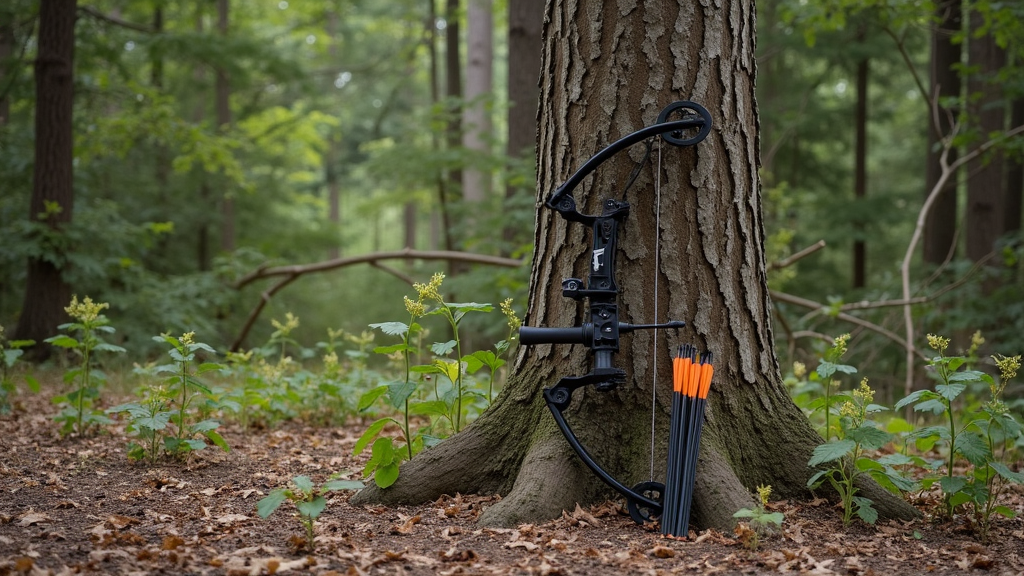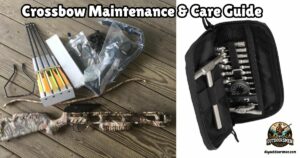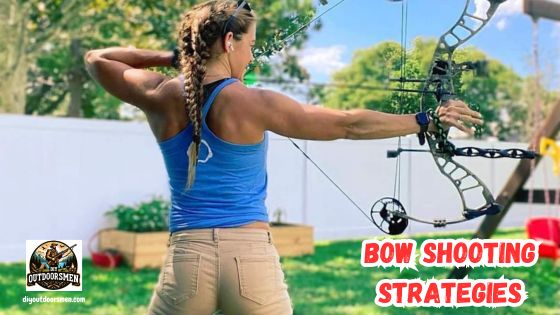Contents
- 1 Step 1: Prepare Your Bow for Success
- 2 Step 2: Achieve a Relaxed Grip and Controlled Draw
- 3 Step 3: Establish a Consistent Anchor Point
- 4 Step 4: Refine Your Aiming Drills
- 5 Step 5: Manage Scent and Environmental Factors
- 6 Step 6: Practice from a Tree Stand and Other Positions
- 7 Step 7: Follow Through and Shooting Consistency
- 8 Wrapping Up
Bowhunting demands precision, patience, and regular practice. I have tracked down that proper shooting strategies can step up your confidence and success rate in the field. Many bowhunters find that refining their technique transforms the hunting experience.
QUICK LOOK: 7 Step Shooting Strategy for Bowhunting
- Prepare Your Bow: Inspect your bow for any signs of wear and check that your arrows remain straight and intact. Proper equipment upkeep builds the foundation for developing your shooting skills.
- Get a Grip: Holding your bow with a relaxed hand is very important for accuracy. A tight grip can cause bow torque and hinder a smooth string release.
- Consistent Anchor Point: A consistent anchor point on your face is very important for repeatable accuracy. Your anchor point is the spot where you draw back the string each time.
- Practice Your Aim: Separating the act of aiming from releasing the arrow is a tactic I have found very useful. Aiming drills let you focus solely on lining up your shot before committing to the release
- Scent Control: In bowhunting, staying unnoticed by game is very important. Scent control is often overlooked. Animals have an acute sense of smell and can quickly detect any human odor.
- Practice Various Shooting Positions: Many bowhunters use tree stands to gain a better vantage point. I have learned that practicing from a tree stand or another elevated position is essential. Shooting from such positions affects your trajectory and angle, so getting accustomed to these conditions is key.
- Follow Through: After releasing your arrow, maintaining your form until the shot is complete enhances overall consistency. I have learned that a strong follow‐through greatly affects the success of your shot.
This article explains shooting strategies for bowhunters using clear tactics to help you become more consistent with your shots. Whether you want to improve your range routine or fine-tune your skills in the wild, the basics remain unchanged.
Every part of your shooting routine plays a role in maximizing your effectiveness. Here, we discuss keeping a relaxed grip, proper breathing, establishing a steady anchor, practicing focused drills, controlling scent, getting comfortable in elevated positions, and maintaining a solid follow‐through after releasing your arrow.
Step 1: Prepare Your Bow for Success
Before heading into the field, make sure your equipment is set and comfortable. Setting up your bow is more than just assembling it. For bowhunters, the first task is to know your bow’s parts. Inspect your bow for any signs of wear and check that your arrows remain straight and intact. Proper equipment upkeep builds the foundation for developing your shooting strategies and skills.
Equipment Setup Essentials
- Inspect the bow limbs and string for any damage.
- Confirm that your arrows are straight and intact.
- Ensure the bow is tuned to your draw weight and style.
- Run a dry‐fire check to verify that all components work together.
Taking extra care with your bow settings boosts your confidence and ensures everything functions correctly when aiming at your target.
Step 2: Achieve a Relaxed Grip and Controlled Draw
Holding your bow with a relaxed hand is very important for accuracy. A tight grip can cause bow torque and hinder a smooth string release. Instead, let your fingers gently hold the bow handle so that your body’s natural movement steadies your shot.
Mastering Your Breathing
Your breathing plays a crucial role during the draw. I use a method where I take a deep, steady breath as I draw the bow, exhale slowly, and then hold my breath at the anchor point before releasing the arrow. This rhythm keeps your body calm and focused. Follow these steps:
- Take a deep breath as you begin drawing.
- Exhale slightly as you align your sight with the target.
- Hold your breath briefly at the anchor point before releasing.
This approach calms your muscles and minimizes unnecessary movement during your shot.
Step 3: Establish a Consistent Anchor Point
A consistent anchor point on your face is very important for repeatable accuracy. Your anchor point is the spot where you draw back the string each time. Using the same spot every shot helps maintain proper alignment and ensures effective power transfer to your arrow.
Finding Your Anchor Point
- Try different spots on your face, like the corner of your mouth or the tip of your nose.
- Test each spot during practice at various distances.
- Choose the one that feels most natural and gives reliable accuracy.
Once you identify your ideal anchor point, practicing it consistently is really important. Repetition builds muscle memory and makes your shooting process smoother and more dependable.
Step 4: Refine Your Aiming Drills
Separating the act of aiming from releasing the arrow is a tactic I have found very useful. Aiming drills let you focus solely on lining up your shot before committing to the release. This division helps you concentrate on one task at a time.
Drills to Improve Your Aim
- Static Draw Drill: Draw your bow to your anchor point and hold it. Focus on aligning your sight with the target, then relax your grip without releasing the arrow.
- Distance Drill: Vary your distance to the target. This prepares you for different scenarios in the field.
- Timing Drill: Pause briefly at the anchor point to fine‐tune the moment of release, helping you detect and correct unwanted movement.
Regular practice of these drills builds the muscle memory needed for consistent shots. By isolating aiming from releasing, every part of your process becomes more deliberate and effective.
Step 5: Manage Scent and Environmental Factors
In bowhunting, staying unnoticed by game is very important. Scent control is often overlooked. Animals have an acute sense of smell and can quickly detect any human odor.
Minimizing Scent
- Check the wind direction before taking your shot to determine the best moment for a silent release.
- Wash your hunting clothes with a scent‐free detergent to keep odors at bay.
- Use natural scent blockers available at outdoor stores to mask human odor.
- Move slowly and deliberately to avoid disturbing the surrounding environment.
Keeping your scent in check is just as important as perfecting your form because even a slight hint of your presence can alert nearby animals.
Step 6: Practice from a Tree Stand and Other Positions
Many bowhunters use tree stands to gain a better vantage point. I have learned that practicing from a tree stand or another elevated position is essential. Shooting from such positions affects your trajectory and angle, so getting accustomed to these conditions is key.

Practice Specific to Your Position
- Rehearse your stance from the tree stand and become comfortable with the seating and how your body adjusts.
- Practice reaching your anchor point while seated, as it may differ from your ground stance.
- Evaluate various angles and distances to understand how elevation influences your shot.
- Include drills with moving targets to simulate real hunting scenarios.
By replicating your tree stand setup during practice, you ensure that your shooting strategy fits the conditions you will face in the field.
Step 7: Follow Through and Shooting Consistency
After releasing your arrow, maintaining your form until the shot is complete enhances overall consistency. I have learned that a strong follow‐through greatly affects the success of your shot. Keeping your bow arm extended and your eyes on the target during the arrow’s flight reinforces proper shooting form.
The Importance of Follow‐Through
- A steady follow‐through helps avoid last‐minute tension, ensuring the arrow flies true.
- It reinforces proper shooting habits by keeping your body in the correct position until the arrow hits.
- Completing your shot fully can highlight areas in your form that need further refinement.
Focus on maintaining the alignment of your bow and body even after the release. This final phase is just as important as setting up your shot, promoting long‐term consistency and improvement.
Wrapping Up
These shooting strategies form an effective framework to refine your bowhunting technique. By ensuring your equipment is ready, using a relaxed grip, establishing a steady anchor, practicing focused drills, controlling your scent, adapting to elevated positions, and committing to a full follow‐through, you lay the groundwork for improved accuracy and a more rewarding hunt.
Consistent practice with these methods will make every shot more reliable and help build lasting habits for success in the field. Try incorporating one or more of these strategies into your next practice session and notice how they boost your performance on the field.
Check Out These Recent Articles:
- 9 Crossbow Maintenance And Care Tips

- Beginner-friendly Fly Selection Packs

- Reviews And Comparisons Of Hunting Crossbows

- Budget-friendly Backpacking Fly Rod Combos

- 9 Crossbow Accessories And Gear For Hunting

- 5 Budget-friendly Fly Rod And Reel Starter Combos

As always, stay safe, enjoy the journey and please try to leave it cleaner than you found it. If you have any comments, questions, ideas, or suggestions please leave them in the comment section below and I’ll get back to you ASAP. You can follow us on YouTube: Man Art Creations for videos of our DIY Adventures.
P.S. – Thanks so much for checking out our blog we really appreciate it. Just so you know, we may receive a commission if you click on some of the links that appear on our site. This helps us keep our content free and up-to-date for everyone. We appreciate your support!



